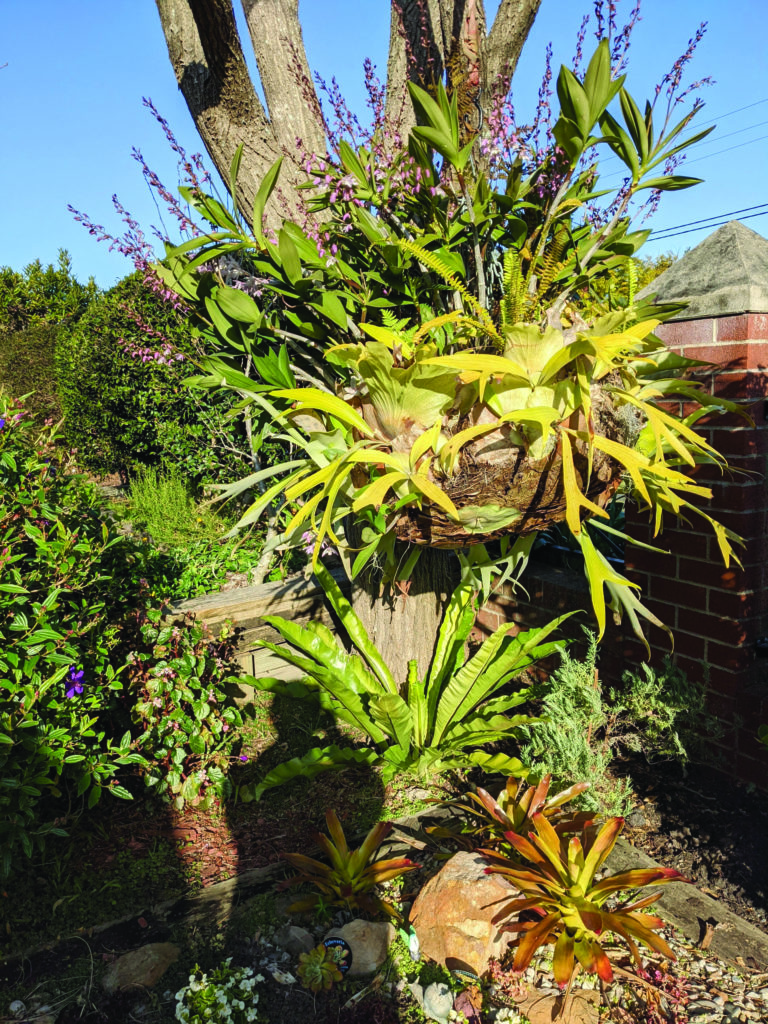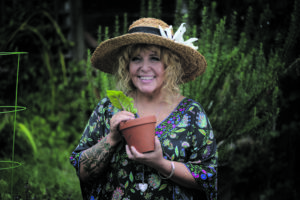Spring is the season of veggie patch creation, renewal, and readiness.
Everyone should grow at least a few vegetables!
I’m not going to give you too much pressure here because from my experience, gardening is something that becomes addictive once you have had a couple of successes.
Growing your own vegetables means that you are giving yourself greater choice in varieties and flavours, helping the environment and yourself to a healthier way of living.
My number one tip is to expect failures and to get out into your garden at least every second day for around five to fifteen minutes and just look around and do one small thing.
It is far better to spend small amounts of time regularly than to save it all up for one big blitz when you get the time – you won’t and in the meantime your garden will die.
Harsh but true.
Also, grow what you know you can look after, don’t go big too early just because you think you can.
Being optimistic and realistic at the same time are the keys to becoming a gardener.
Location, Location, Location
If I was the one gardening at your place, I would be turning every possible position into a veggie patch, but you need to ‘do you’ as they say.
Decide on how many vegetables you think you will want to produce and naturally this will also depend on available space along with your experience and available time.
Most vegetables need warmth and at least 6 hours of full, direct sun so your first task is to determine exactly where that is in your garden.
Shelter is another often-used term, and this means shelter from winds and driving rains.
While you might not have this naturally, you can quickly create it with strategically placed lattice in the short term and fast-growing hedges in your longer-range plans.
Time for Beds
There has been a tendency to create raised garden beds the past few years and I have to say that in some instances, I am a fan.
They are perfect for those who have trouble getting right down to dirt level and back up and they do help deter destructive pests and if you have pets, they can help keep them out of your food crops!
However, you really should ensure that the bottoms of the vegetable beds are open to the earth below if possible, so your added soil are in contact with the soil biome.
This currently trending term simply means the organisms living together in the soil of a particular area.
The contact you make with the exiting soil below will ensure the worms, the good microbes and insects can help keep your garden bed soil alive.
If you can’t do this, then constantly adding compost will help create a living soil biome.
Spring Preparation and Rejuvenation
Now you have the place and the bed, you will need to do a bit of either preparation or rejuvenation.
After supporting the winter crops as well as taking whatever the elements have thrown sat it, soil will need a bit of boosting.
If this is a new garden patch, it will need to be enriched to give a supercharged boost to the coming plants.
Vegetables need a very rich soil, and the fact is, most of our natural soil is not rich enough to support them.
While there are various ways of doing this, a simple method is to dig over your patch to the depth of a spade blade, removing old roots and any stones as you go.
Two weeks before planting, to each area that is approximately 2 x 2m dig in a mixture of the following: 2 level barrows of compost, 50 litres of cow manure, 50 litres of chicken manure, 50 litres of mushroom compost (or an additional barrow of compost). Worm casting can be added for a super boost!
Planting Tips
Follow the directions of seed/seedlings labels and packets but be prepared to break a few rules.
I push the limits of spacing with some of my plantings for example, but research and experience have taught me this.
If you are a beginner, follow the ‘recipe’ and then experiment later.
Ensure that you can physically reach all your plants.
This is a novice mistake, planting crops and not thinking ahead to how you will access everything once it has grown.
On that, make a note of how the sun falls on your garden and define what will be ‘the back’, the area that will usually be towards the West.
You don’t want your higher plants to cast shadows across your lower plants during most of the day.
Group together the plants with similar environmental needs especially watering and plant those that prefer drier feet on the higher areas of your patch.
Select what is suggested for your area and the season because while you may have some success with out of season planting, they will never be as strong, abundant, and healthy as vegetables planted at the right time.
You can get a jump on the season by planting seeds indoors or in greenhouses.
Gardening beginners, those who need to ‘go back to the drawing board’ and self-proclaimed ‘brown thumbs’, pick three vegetables from seasonal suggestions and focus all your attention this season on getting them right and then expand next season.
If that seems too much? Pick one! You can always find my weekly planting guide on this page and if you want to plan ahead, hop on over to organicgardener.com.au/planting-guides.
GARDENING BOOK REVIEW
‘The Little Veggie Patch Co., how to grow food in small spaces’ by Fabian Capomolla and Mat Pember, (Pan Macmillan, Australia), has been around for a few years now but has really stood the test in the garden.
I recommend this title highly to those starting out no matter the size of the garden as it contains good advice on every aspect of organic vegetable gardening and explains it in easy-to-understand terms.
They show easier methods, suggest Australian suitable varieties, and throw in snippets of personal experience. This is easily a 5 out of 5 leaf book.
TASKS & TIPS FOR YOU THIS WEEK
Soil health check. You can have your soil checked at most garden centres and nurseries or do it yourself with easily obtained kits and meters.
Make sure the pH level suits the plants you intend to grow.
Prepare beds by enriching with organic matter and fertilizers and start making your spring planting plans if you haven’t already.
You could plant artichokes, asparagus crowns, cape gooseberry, capsicum, beetroot, climbing and dwarf beans, cabbage, carrot, celery, chicory, choko, cress, cucumbers, eggplants, endive, melons, squashes, lettuce, spring onions, parsnip, peas, potatoes, radish, rhubarb crowns, salsify, silverbeet, sweet corn, alyssum, calendula, California poppy, carnation, celosia, chrysanthemum, cosmos, dahlia, dianthus, everlasting daisies, gazania, gerbera, marigold, petunia, salvia, zinnia, kangaroo paw, nasturtium, snapdragon, salvia.
Lunar Planting Guide: 4th – 10th SEP
Saturday the waning moon enters Leo so you will find this to be an optimal time for the destruction of weeds and pests.
From Monday the waning moon enters Virgo so planting root crops and feeding all plants as well as tending composts is favourable.
On Tuesday the new moon in Virgo means that this is a day of rest in the garden.
Wednesday sees the waxing moon arrive in Libra and this will be a good time to start thinning out seedlings, plant herbs and flowering annuals.
Friday late afternoon the waxing moon enters Scorpio so these activities including the planting of any above ground crop will be more successful.
YOU & YOUR GARDEN: Amazing Staghorn, Ian Jarratt

I love receiving your emails and messages and this one nearly knocked me off my perch! What a beauty Ian and thank you so much for sharing. I’m sure other gardeners will be inspired by this.
Ian writes:
“Please find attached a stag horn which we originally had around a palm tree at our home on the Northern Beaches.
“When we moved to the Central Coast, we took it from the palm tree, broke it up and put in a basket.
“When we moved to Kincumber from Umina, we once again moved it and had the stag attached to a tree in our front yard.
“Over time we have added various plants, especially rock orchids which are now in full bloom.
The basket is somewhere within the plant.”
Cheralyn Darcey is a gardening author, community garden coordinator and along with Pete Little, hosts ‘At Home with The Gardening Gang’ 8 – 10am every Saturday on CoastFM963. She is also co-host of ‘Mostly About Plants’ a weekly gardening podcast with Vicki White.
Send your gardening questions, events, and news to: gardeningcentralcoast@gmail.com



